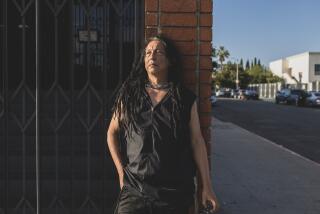‘MIAMI’ STOOGES
- Share via
I take strong issue with Connie Koenenn and Claire Derway’s “ ‘Miami Vice’: An Ebb Tide in Pastels for the ‘Real Man’ ” (Aug. 31).
They seem blinded by their own mistaken thesis: that “Miami Vice” functions as a cultural bellwether that not only captures a national mood of despair but presents a new kind of male hero who shows us how to cope in a world run amok.
Tubbs, Crockett and Castillo do not represent especially new kinds of heroes; nor does their emergence suggest that the myth of the macho , gun-slinging, “real man” popularized in American Westerns has lost appeal.
Tubbs and Crockett may have done their shopping on Miami’s version of Rodeo Drive, but they have certainly not attended Esalen. If they linger in our imagination or titillate the fantasies of our adolescents, it is surely not because, as Koenenn and Derway state, they are the “reflective sort of people” who can “express sensitivity” and long to restore “real relatedness among people.”
These are hip cops who convince us of their hipness by the clothes they wear, the language they speak, and, yes, their awareness that the world is not a friendly place. Their hipness protects them against the idealism we used to expect of our heroes. But it does not prevent them from doing good and from using flagrant, chic violence to achieve their ends.
It is this last point that seems central to understanding the appeal of “Miami Vice.”
“Miami Vice” presents us with chic violence, clean and slick and sexy, played to the accompaniment of Latin jazz or a reggae beat. It is cool, it is enthralling, it is cathartic; it is also cruel, stupid, and distorting--especially to those with adolescent minds to whom such violence most appeals.
This fusion of sexiness and violence--let us call it “ macho chic”--is the most powerful and regrettable component of “Miami Vice.” It is what Koenenn and Derway, in their orgy of praise for the program, curiously fail to see.
JEFFREY SEGALL
Santa Barbara


